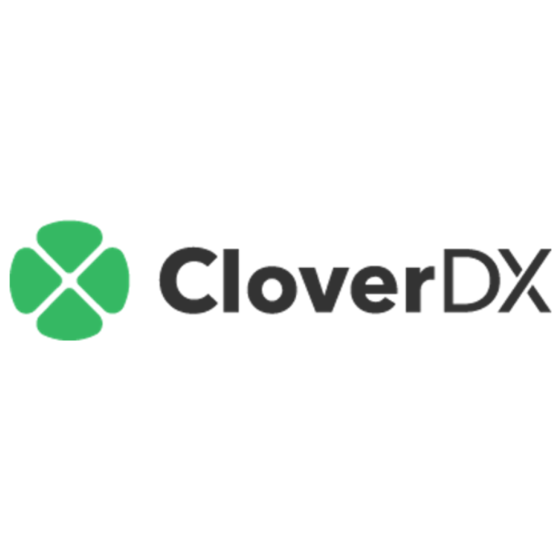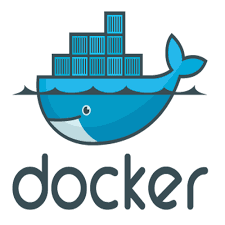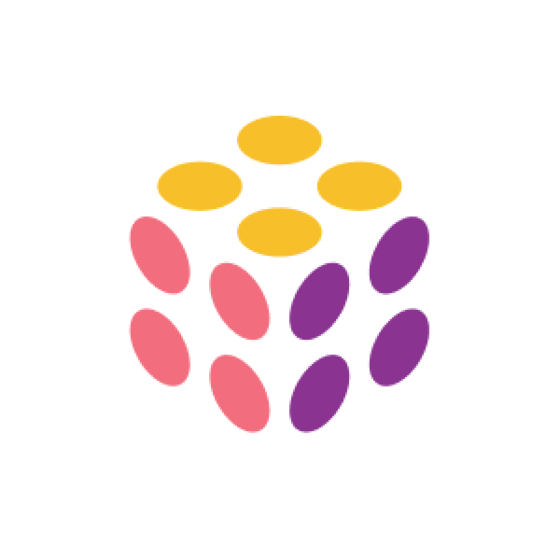10 Best Data Migration Software Shortlist
Here's my pick of the 10 best software from the 23 tools reviewed.
Our one-on-one guidance will help you find the perfect fit.
Navigating the world of data migration means dealing with intricate file systems, transitioning between operating systems or versions of Windows like Windows 10, Windows 11, macOS, Linux, or older platforms like Windows 7. Whether you're moving from a hard disk drive (HDD) to a solid state drive (SSD), managing SQL databases, or transitioning from an old computer to a new PC, it's crucial to have reliable tools.
The best data migration tools streamline the data migration process, offer disk cloning for SSD and HDD, and ensure data backup and management. With threats like ransomware, the need for data recovery, disk partition resizing, and storage migration becomes paramount.
What Is A Data Migration Software?
Data migration software serves as a specialized management tool designed to transfer files, apps, and various types of data between storage devices or systems, whether it's transitioning from Android to iOS, moving data between open-source platforms, or ensuring application migration without the worry of data loss. This tool, especially crucial when setting up a new computer or new system, works adeptly across formats, making it an invaluable asset in today's dynamic disk environments.
I've often seen individuals grapple with the challenge of data management, seeking ways to optimize their transitions without compromising the integrity of their data—this is where a robust data migration software becomes indispensable, offering features like bootable USB drive support and additional features that cater to the unique needs of Microsoft windows pc users and beyond.
Best Data Migration Software Summary
| Tool | Best For | Trial Info | Price | ||
|---|---|---|---|---|---|
| 1 | Best for Microsoft 365 data migration | Free trial available | From $5,995/year | Website | |
| 2 | Best for associative data modeling and analytics | 30-day free trial for new users | Pricing upon request | Website | |
| 3 | Best for complex data transformation workflows | Free trial available | From $5,500/unit/year | Website | |
| 4 | Best for connecting applications and data across hybrid environments | Free trial + demo available | From $99/month | Website | |
| 5 | Best for rapid online data transfers to AWS | Not available | Pricing upon request | Website | |
| 6 | Best for high-speed data integration and transformation | Free trial upon request | Pricing upon request | Website | |
| 7 | Best for live database migration to Amazon platforms | Not available | Pricing upon request | Website | |
| 8 | Best for large-scale data integration projects | Free demo available | Pricing upon request | Website | |
| 9 | Best for automating data integration into cloud warehouses | Free trial + free demo available | Pricing upon request | Website | |
| 10 | Best for end-to-end data migration to the cloud | Free trial available | From $0.75/RPU credit | Website |
-

Docker
Visit WebsiteThis is an aggregated rating for this tool including ratings from Crozdesk users and ratings from other sites.4.6 -

Pulumi
Visit WebsiteThis is an aggregated rating for this tool including ratings from Crozdesk users and ratings from other sites.4.8 -

GitHub Actions
Visit Website
Best Data Migration Software Reviews
ShareGate is a comprehensive, user-friendly solution designed for Microsoft 365 migration and governance. It enables IT professionals to handle data migrations quickly and securely, manage permissions, and ensure data protection.
Why I Picked ShareGate:
I chose this tool for its support for multiple sources and destinations, including SharePoint, OneDrive, Google Drive, and Exchange Online. This versatility means that organizations can consolidate their data from various platforms into Microsoft 365 efficiently. Additionally, ShareGate provides robust tools for lifecycle management, ensuring that data integrity and security are maintained throughout the migration process.
Standout Features and Integrations:
Additional features include accelerated migration capabilities, which enable quick data transfers from various sources to Microsoft 365. Another notable feature is the permission management tool, which enhances security by overseeing user permissions and access levels across Teams, SharePoint, and OneDrive.
Pros and cons
Pros:
- Supports both cloud and on-premises at a fixed cost
- Good reporting features
- Allows for pre-scheduling of migrations
Cons:
- May be expensive for those with limited budgets
- Limited to Microsoft environments
When data needs a relationship-based understanding, Qlik is the answer. Known for its associative data modeling prowess, Qlik not only offers data migration but also provides tools for insightful analytics. For those needing a deep dive into relational data structures, Qlik's offerings align perfectly.
Why I Picked Qlik:
Among the myriad of data tools I sifted through, Qlik stood out due to its unique approach to associative data modeling. My opinion, after careful comparison, is that when it comes to understanding relational data in-depth, few can rival Qlik. That's why, for organizations keen on associative analytics, I've pitched my tent with Qlik.
Standout Features and Integrations:
Qlik's in-memory data processing ensures rapid analytics and insights. Its Associative Model offers a unique lens to view and analyze data relationships. As for integrations, Qlik supports a myriad of data sources, from flat files to databases and even online services, ensuring adaptability.
Pros and cons
Pros:
- Supports a wide range of data sources
- The associative Model grants a deep relational data understanding
- In-memory processing ensures rapid insights
Cons:
- Some integrations might need additional configurations
- Licensing can be complex for larger teams
- Might require training for the best utilization
In the intricate world of data, transforming it into actionable insights requires a robust workflow. CloverDX is all about ensuring that these workflows are not only efficient but also tailored to handle complexity. When diving into intricate data transformation projects, CloverDX has features geared toward addressing these very challenges.
Why I Picked CloverDX:
During my journey of filtering out the best, CloverDX emerged as a leader in handling complex data workflows. I chose it because of its adeptness in ensuring that data transformation isn't just about migration but also about understanding and molding it. For organizations looking to manage intricate data landscapes, CloverDX is the tool I recommend.
Standout Features and Integrations:
CloverDX shines with its visual data transformation mappings, making it easier to see and manage intricate data paths. Its data quality management ensures that the transformed data remains pristine and actionable. On the integration front, CloverDX is versatile, catering to databases, CRM systems, and even Big Data platforms.
Pros and cons
Pros:
- Versatile integration capabilities
- Strong emphasis on data quality management
- Visual mappings offer clarity in data transformation
Cons:
- Some users might find the interface less intuitive
- Custom transformations might require advanced expertise
- Might have a steep learning curve for beginners
With businesses operating across diverse environments, there's a growing need to connect applications and data. Boomi steps up to this demand by offering a platform to unify connections across hybrid digital landscapes.
Why I Picked Boomi:
In determining a tool adept at bridging various environments, Boomi stood out prominently. Its hybrid nature made it a clear choice for connecting applications and data across mixed settings. For organizations with scattered digital assets, I find Boomi to be the most fitting.
Standout Features and Integrations:
Boomi's drag-and-drop interface simplifies complex integration tasks. It's built with an AI-powered suggestion system, aiding users in their integration journey. Notably, Boomi offers integrations with systems like SAP, NetSuite, and Salesforce.
Pros and cons
Pros:
- A broad spectrum of integrations with major systems
- AI-powered suggestions aid in the integration process
- Simplifies integration with drag-and-drop functionality
Cons:
- Cost structure may be complex for some users
- Potential latency issues in real-time data sync
- May have a learning curve for absolute beginners
Migrating large volumes of data over the Internet can be both time-consuming and complex. AWS DataSync offers a simplified means to achieve this, particularly for businesses aiming for a swift and straightforward data transfer into the AWS ecosystem.
Why I Picked AWS DataSync:
During my selection process, I was on the lookout for tools that promise efficient data transfers. AWS DataSync, with its emphasis on speed and integration with the AWS environment, came up prominently. It's evident that when it comes to rapid online transfers to AWS, DataSync has a marked edge.
Standout Features and Integrations:
AWS DataSync is tailored to expedite the transfer process, making use of automated scheduling to move data. It supports both on-premises to cloud and inter-region transfers within AWS. Key integrations include the likes of Amazon S3, Amazon EFS, and Amazon FSx.
Pros and cons
Pros:
- Deep integration with the AWS ecosystem
- Flexible scheduling for data migration
- Efficient data transfer capabilities
Cons:
- Initial setup may require some AWS familiarity
- Data transfer costs might accumulate for large datasets
- Specific to the AWS environment, limiting its universality
Handling vast amounts of data requires robust tools that can process information swiftly. IBM DataStage delivers on this front, providing a platform tailored for high-speed data integration and transformation, ensuring timely and accurate data insights.
Why I Picked IBM DataStage:
Having evaluated various data tools, IBM DataStage's prowess in speed and transformation was undeniable. I chose this platform as it not only handles data integration but excels in doing so at high speeds. In my view, for projects demanding rapid data movement and alteration, IBM DataStage is unparalleled.
Standout Features and Integrations:
IBM DataStage supports parallel processing, accelerating data tasks. Its design interface is visually driven, aiding in quick workflow creation. Integration-wise, DataStage can connect with a multitude of sources like DB2, Oracle, and Teradata.
Pros and cons
Pros:
- A wide array of source integrations
- Visually driven design interface for workflow efficiency
- Parallel processing boosts data task speeds
Cons:
- Requires dedicated infrastructure for optimal performance
- The licensing model may be intricate for some users
- Could be over-complicated for simple projects
Best for live database migration to Amazon platforms
Migrating databases without disrupting ongoing operations is a challenge many organizations face. AWS DMS offers a solution to this problem, providing a means to move databases to Amazon platforms with minimal downtime.
Why I Picked AWS Database Migration Service (DMS):
I was determined to find a solution that not only facilitates database migration but also ensures that operations remain largely unaffected. AWS DMS, in my judgment, stood out with its promise of minimal downtime and its deep integration with Amazon databases. It's my opinion that for live database shifts to Amazon platforms, DMS is a top contender.
Standout Features and Integrations:
DMS supports a wide array of database sources and targets, ensuring versatility in migration projects. It also offers continuous data replication, allowing for a transition. Key integrations include Amazon RDS, Amazon Aurora, and Amazon Redshift.
Pros and cons
Pros:
- Integration with Amazon databases
- Continuous data replication ensures operational continuity
- Supports a wide variety of source and target databases
Cons:
- Requires understanding of AWS's pricing structure
- Complexity increases with very large datasets
- Limited to Amazon's database services for certain functionalities
Tackling large-scale data integration demands tools with substantial capabilities. Informatica PowerCenter, renowned in the data world, is tailor-made to address these vast projects.
Why I Picked Informatica PowerCenter:
In my assessment of data integration tools, Informatica PowerCenter was undeniable due to its strength in handling voluminous projects. I chose this tool because it's not just about data integration; it's about doing it at scale. My opinion holds that for expansive data integration endeavors, Informatica PowerCenter is the gold standard.
Standout Features & Integrations:
PowerCenter is recognized for its high-performance integration with scalability. Its metadata-driven approach offers clarity and management ease for large datasets. On the integration side, PowerCenter is versatile, connecting with databases, ERPs, CRMs, and more.
Pros and cons
Pros:
- Broad integration capabilities across platforms
- Metadata-driven approach for clarity and management
- Scalable integration to handle vast projects
Cons:
- Might be expensive for small-scale projects
- Licensing can be intricate for larger setups
- Might be complex for newcomers to data integration
Navigating the cloud environment often requires data integration, and Fivetran specializes in making this process automated and hassle-free. When it comes to populating cloud warehouses without manual intricacies, Fivetran is engineered for this exact purpose.
Why I Picked Fivetran:
In my quest to determine the most efficient tools for cloud data integration, Fivetran was a clear standout. I judged its capabilities against many, and its emphasis on automation made it a winner in my books. For businesses eyeing a smooth cloud warehouse data transition, Fivetran's automated prowess is unmatched.
Standout Features and Integrations:
Fivetran prides itself on zero-maintenance connectors that facilitate continuous data replication. Its log-based change data capture ensures that the cloud warehouses remain updated. Integration-wise, Fivetran supports a plethora of cloud platforms, from AWS to Google Cloud, ensuring adaptability in diverse cloud environments.
Pros and cons
Pros:
- Wide-ranging cloud platform support
- Continuous and timely cloud warehouse updates
- Zero-maintenance connectors reduce manual work
Cons:
- Advanced features might come with a steeper price
- Some connectors might require additional configurations
- Might be overkill for smaller data needs
Transferring data securely and efficiently to the cloud is a requisite in today's digital era. Rivery steps up to this task, offering an end-to-end solution for cloud data migration.
Why I Picked Rivery:
Through my journey of finding the best cloud migration tools, Rivery emerged as a strong contender. Its comprehensive approach to cloud migration led me to determine that it had a unique edge. In my judgment, organizations looking for thorough cloud migration would find Rivery indispensable.
Standout Features and Integrations:
Rivery offers a suite of pre-built data connectors, easing the migration from various sources to the cloud. Its real-time data integration ensures timely data availability. Among the integrations, Rivery supports popular platforms like Google Cloud, AWS, and Azure.
Pros and cons
Pros:
- Supports major cloud platforms
- Real-time data integration ensures data timeliness
- Pre-built connectors offer ease of use
Cons:
- The pricing structure may be unclear for some users
- Might be too extensive for simple migrations
- Some connectors might need additional configurations
Other Data Migration Software
Below is a list of additional data migration software that I shortlisted, but did not make it to the top 10. They are definitely worth checking them out.
- Osmos
For SMEs seeking a cloud-based migration tool
- Laplink
For simple PC-to-PC data transfers
- OpsHub Migration Manager
For migrating between ALM and DevOps systems
- Astera Centerprise
Good for ETL processes and data transformation
- Acronis Cyber Protect Home Office
Good for comprehensive home office backup solutions
- Macrium Reflect
Good for disk imaging and recovery tasks
- Talend Stitch
Good for automating data-loading tasks
- AOMEI Backupper
Good for system, disk, and file backups
- Daemon Tools
Good for mounting virtual drives and disc image emulation
- Matillion
Good for data integration in cloud platforms
- NovaBACKUP
Good for small businesses seeking backup solutions
- Skyvia Import
Good for cloud data integration and management
- Striim
Good for real-time data streaming and analysis
Selection Criteria For Choosing The Best Data Migration Software
When looking for the ideal data migration and backup software, there are numerous considerations to bear in mind. Having tried out more than 30 tools in this category, it's evident that certain criteria stand out more than others. The depth of my evaluation focused on specific functionalities and features that would cater to diverse needs.
Here are the aspects that, based on my experience, matter the most when deciding:
Core Functionality
- Data Transfer: The tool should enable smooth and efficient transfer of data from one platform or medium to another without loss or corruption.
- Backup and Restore: Essential to protect and recover data, the tool should offer options for both full and incremental backups.
- Scheduling: Automated schedules for backups, ensuring that you have the latest version of your data saved without manual intervention.
- Data Integrity Check: Post-migration or backup, the tool should validate that data has been transferred correctly and is intact.
Key Features
- Versioning: Maintain multiple versions of files or data, allowing rollback to previous states.
- Encryption: For data security, especially during transfer, tools should provide strong encryption options.
- Compression: Reducing the size of backups to save on storage costs and speed up transfer times.
- Differential Backup: Only backing up changes since the last full backup, conserving space and time.
- Logging and Reporting: Keeping track of all activities, and errors, and providing insights into the backup and migration process.
Usability
- Intuitive Interface: Considering the complexity of data operations, a straightforward dashboard that displays all necessary actions and information is paramount.
- Onboarding Process: Tools should have comprehensive guides, tutorials, or walkthroughs to get users started quickly.
- Efficient Search and Filter: With vast amounts of data being managed, it's essential for users to easily search, filter, and retrieve specific datasets or files.
- Role-Based Access: Especially in larger organizations, the software should allow for permissions and accesses to be defined based on user roles, ensuring only authorized personnel handle sensitive data.
- Customer Support: Given the critical nature of data, prompt and knowledgeable customer support is non-negotiable.
Most Common Questions Regarding Data Migration Software (FAQs)
What are the benefits of using data migration software?
Using data migration software offers several advantages:
- Data Integrity: These tools ensure that data remains consistent and unaltered during the migration process.
- Efficiency: They can significantly reduce the time it takes to transfer data compared to manual methods.
- Scalability: Most tools are built to handle large-scale migrations, making it easier for businesses to grow without worrying about data transfer limitations.
- Automation: Many of these tools offer automation features, allowing for scheduled migrations or backups without human intervention.
- Security: Ensuring that your data remains encrypted and secure during the migration process is a core feature of these tools.
How much do these tools typically cost?
The cost of data migration software can vary widely based on features, scalability, and the intended audience (individuals vs. enterprises). Some tools offer a one-time purchase price, while others operate on a subscription model.
What are the common pricing models for data migration software?
There are several prevalent pricing models:
- Subscription-Based: Monthly or yearly fees.
- Per-Migration Cost: Pricing is based on each migration instance.
- User-Based Pricing: Costs depend on the number of users accessing the software.
- Volume-Based Pricing: Fees are determined by the amount of data being migrated.
What's the typical price range for these tools?
While prices can vary significantly, you can generally expect to pay anywhere from $10/month for basic tools to over $1,000/month for enterprise-grade solutions with advanced features.
Which is the most affordable data migration software?
Many tools cater to different needs, but on the lower end of the spectrum, tools like Skyvia Import offer competitive pricing, especially for smaller businesses or individual users.
Which software is considered the most expensive?
Enterprise-grade solutions like Informatica or Talend Stitch typically come with a higher price tag, given their comprehensive feature set and scalability.
Are there any free data migration tools available?
Yes, some tools offer free versions with limited functionality. For example, Macrium Reflect and AOMEI Backupper have free versions that cater to basic backup and migration needs, though they might lack advanced features present in their premium counterparts.
Is it worth investing in premium software for data migration?
If you’re handling large volumes of data or require advanced features like automation, encryption, or scalability, it’s often worth investing in a premium solution. The peace of mind knowing that your data is secure and the process is efficient can often justify the cost.
Other Data Management Software Reviews
Summary
Choosing the right data migration software is crucial to ensure data integrity, efficiency, and security during the transfer process. With a myriad of options available, it's essential to consider core functionality, key features, usability, and pricing to make an informed decision. From free tools for basic needs to high-end solutions for enterprises, the market caters to a wide range of requirements.
Key Takeaways
- Understand your needs: Before diving into software selection, outline what you specifically need in terms of data volume, frequency of migrations, and any specialized requirements. This will guide your search more effectively.
- Focus on user experience and support: Beyond just features, the ease of use and quality of customer support can greatly impact the success of your data migrations.
- Consider the total cost: While initial pricing is a factor, consider other costs such as training, scalability needs, and any additional integrations or features you might need in the future.
What Do You Think?
While I've endeavored to provide a comprehensive list, the world of data migration software is vast and ever-evolving. If you've come across a tool that should be on this list or have personal experiences with others that deserve mention, I'd love to hear from you. Your insights can help refine this guide further and assist others in their journey to find the right software. Feel free to share your recommendations.
























